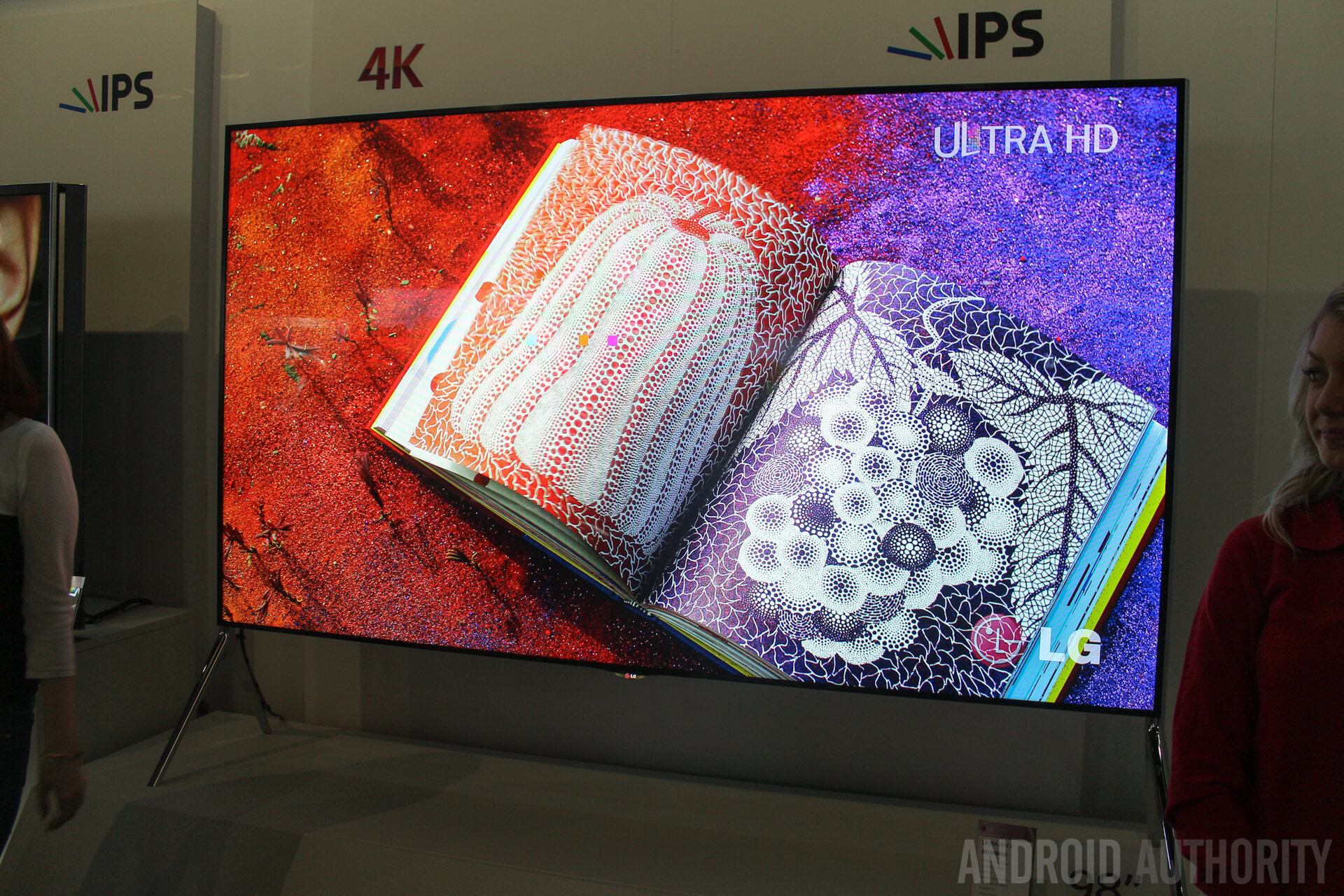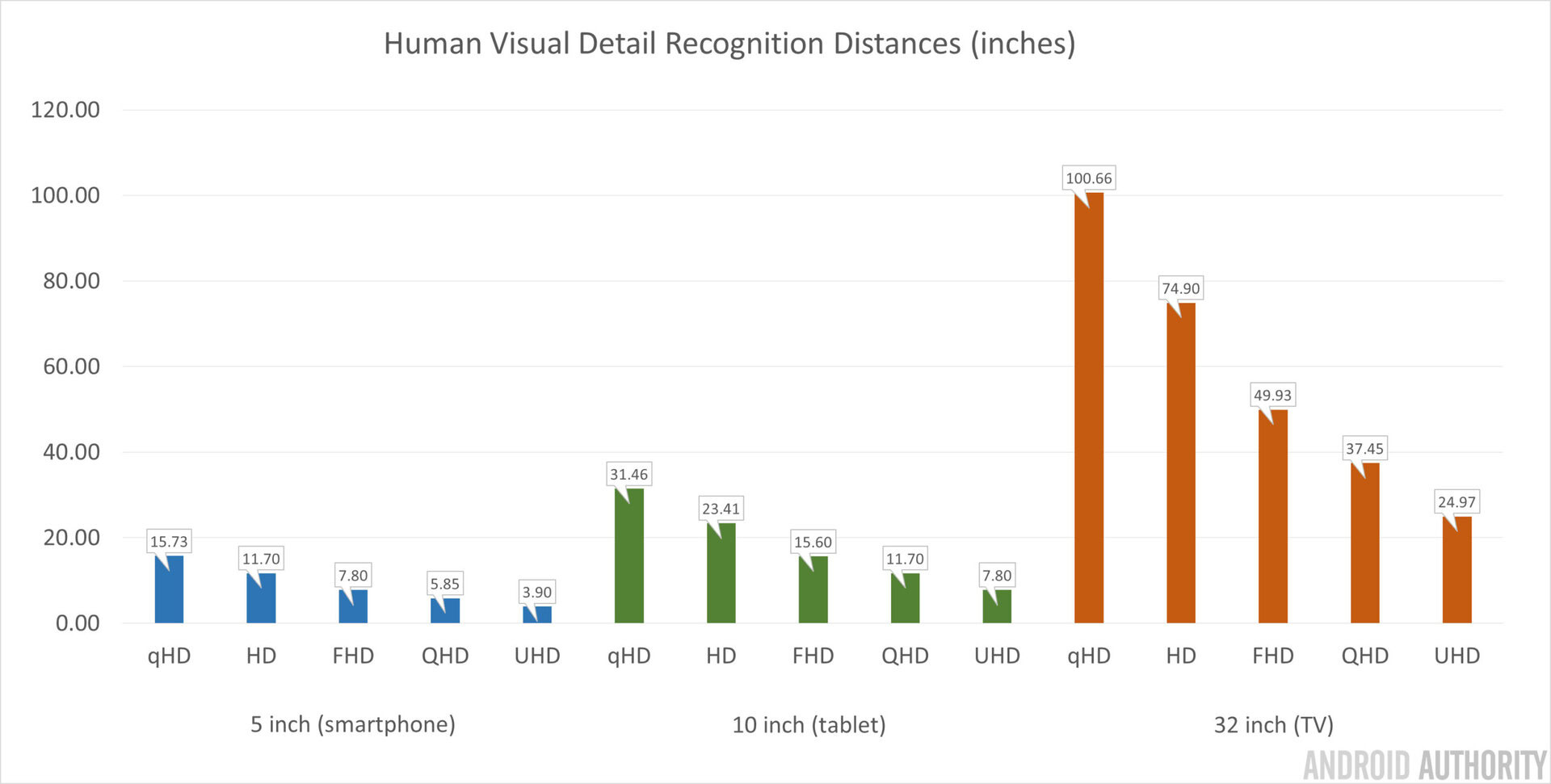Affiliate links on Android Authority may earn us a commission. Learn more.
Do we need smartphones with 4K displays?
Published onFebruary 19, 2014

The trend towards higher resolution smartphone displays is well underway. HTC, LG, Samsung, and Sony are all looking to up the pixel count with their next generation handsets, with many of the big names expected to aim for QHD (2560×1440) this coming generation.
According to statements made a few months ago at a South Korean Ministry of Trade, Industry and Energy analyst event, Samsung is even planning to release an Ultra-HDTV smartphone sometime in 2015, that’s 3840 pixels wide by 2160 pixels tall, also known as 4K. The South Korean press outlet Media Daum has also reported that Samsung has smartphones under development that would take the current 440ppi 5-inch HD displays and increase the pixel density to QHD (560ppi), followed by UHD (860ppi). A 5 inch handset with 860ppi would give the device a near 4K display resolution of 3748×2108.
This isn’t just speculation coming from the hardware rumor mill, research and market analysis firms are also predicting a swift leap up the resolution ladder. NFD Group has recently released a report which forecasts that global shipments of 4K displays will reach 23 million units in 2015, with smartphones accounting for just over 5 percent of these shipments in North America and Japan, and just under 5 percent in Western Europe. That works out at roughly 1.15 million smartphones, which seems like a pitiful number compared with the one billion smartphones shipped last year, but considering that we’re not even at QHD yet, some market penetration as early as 2015 means that 4K isn’t too far away.
The big question is, does this higher resolution even make sense for smartphones?
Image Quality
Image quality will take an obvious bump when we reach 4K. For a little test, take a look at the picture below. It features the same image resized to different resolutions, in an attempt to imitate differences between larger PPI screen sizes. This is not an accurate representation of 4K image quality, more of a ballpark comparison in quality between 4K, 1080p, and 720p resolutions. At a distance it may be harder to tell the difference, but zoom into full size and you might be able to see the pixels.


This leads us to the crux of the issue regarding mobile devices. On smaller, pixel dense displays, can we really notice this change in quality?
Viewing Distance
I’m sure many of you won’t complain about the quality of your high-end 1080p smartphone display, but if you’re close enough to your handset you can probably still make out the individual pixels. Using the Human Visual System Limitation equation we can understand why this is and estimate at what distance the viewer can pick out individual pixel details on a display.
Roughly speaking, you will probably struggle to notice individual pixels on a 5 inch 1080p display at a distance of around 8 inches, which is quite a typical viewing distance, but on a 4K display you’d have to be around 4 inches away to notice them, which is rather close. For 10 inch tablets, UHD pixels can be noticed at around 7.5 inches away, which is probably as close as you’re likely to hold your tablet to your face, whilst pixels on a 10 inch 1080p display would be visible within 15.5 inches. The chart below should demonstrate this concept a little better.

For smartphones then, the jump to 4K is likely to provide an improvement in image quality compared with 1080p, but the difference between QHD (sub 6 inch viewing distance) and UHD (4 inch viewing distance) may not be noticeable in most situations. Larger tablets would see a greater benefit from ultra-high resolution displays, simply because of the larger screen size. There are also other contributing factors to making out individual details, such as image sharpness and contrast, which need to be addresses as well as just display resolution.
Even so, this isn’t to say that a 4K smartphone isn’t desirable. Eventually, when the costs come down, there’s no reason not to push for even higher quality displays, even if the generational leap may be diminishing. Not to mention that being able to display future UHD TV content on our mobile devices is probably a good enough reason on its own to want 4K smartphones.
We’re moving ever closer to the limit where the human eye can no longer make out individual pixels on a display, but we’re not quite there yet.
[poll id=”468″]